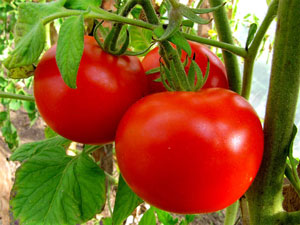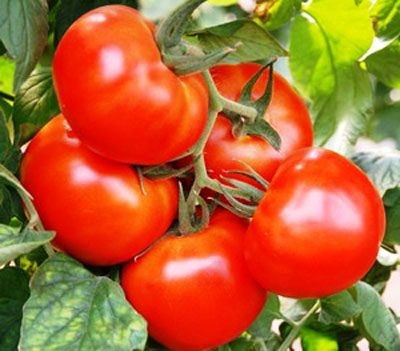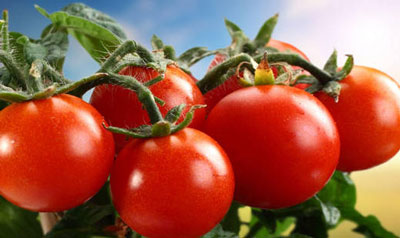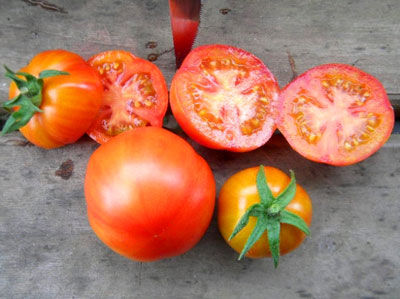 Varietal seeds compete with hybrids for the right to be favorites in the beds of gardeners and gardeners. However, it is practically impossible to make a final choice in favor of one or the other, since each species has its undeniable advantages. In this article we will talk about loved ones all sort of tomatoes "Sanka", the characteristic and description of the variety of which is given in maximum detail. You just need to correlate the information received with what you would like to get to your table from such a useful vegetable as a tomato.
Varietal seeds compete with hybrids for the right to be favorites in the beds of gardeners and gardeners. However, it is practically impossible to make a final choice in favor of one or the other, since each species has its undeniable advantages. In this article we will talk about loved ones all sort of tomatoes "Sanka", the characteristic and description of the variety of which is given in maximum detail. You just need to correlate the information received with what you would like to get to your table from such a useful vegetable as a tomato.
Taste qualities of fruits
It should be noted right away that the fruits of the Sanka tomato do not differ in gigantic sizes, so this variety is not suitable for lovers of large sizes. However, after tasting the fruits of tomatoes of this variety to taste, perhaps you will reconsider your attitude to size, due to the presence of more compelling arguments.
The fruits of the Sanka tomato variety come in two types of coloring, red and bright yellow, called "golden", and they do not differ too much in taste. Based on the fact that the tastes of the fruits of these varieties are identical, many gardeners advise planting both species. Thus, you will have a colorful tasty and healthy salad on the table, and when canning it in jars, the result will also be more aesthetic.
If we examine in more detail the red type of tomatoes of this variety, then it is especially attractive for the correct form, the absence of an unripe spot around the stem, moderate fleshiness, with the presence of a sufficient amount of juice. Seeds in fruits do not interfere with enjoying the taste, because of their small size.
Tomato "Sanka", the characteristics and description of the variety, judging by the reviews, have fruits with a high sucrose content, which makes them especially tasty, a small piquant sourness, only emphasizes the sophistication of the taste of tomatoes of this variety.

Given the small size of the fruits of this variety, reaching only 100 grams, and even with good care on the lower brushes, it is easy to conclude that this is a great option for canning. Thanks to a sufficiently strong skin, the best tomato variety for Moscow region keep their shape well in jars, practically do not crack and do not wrinkle. Also, tomatoes of this variety are a find for preserving sliced salads, the slices also retain their shape, and when using two colors of fruits, red and yellow, the salad is also very colorful, with excellent taste.
The fruit contains a high content of the Sanka tomato variety and useful substances such as lycopene, as well as vitamins C, A and K.
Plant characteristics
The main thing that I want to note as the most common in reviews as an attractive characteristic of this variety is the compactness of the determinant bush itself. Determinism means limited growth, in addition, the bush is not sprawling, which is also important when choosing tomato seeds for planting.
The compactness of the bush of a tomato plant is most preferable, if, of course, the area reserved for sowing allows. The fact is that such an important characteristic allows you to get rid of the need for additional labor-intensive work on gartering bushes and pinching. Given that such work is carried out when the bush is in a mature growth phase, which occurs in the month of July, this work has to be carried out under the scorching sun. And with a large plantation, this is a very significant relief of labor.Thus, according to the experience of gardeners, whom they willingly share, to plant seedlings of Sanka tomato plants, we can characterize and describe the variety that we cite with a density of 5-6 pieces per 1 m2.

In fairness, it should be noted that the productivity of tomatoes of this variety cannot be called record high, however, due to the compactness of plants and the high density of sowing seedlings in the soil, it is possible to achieve just record results in harvesting, which reaches up to 15 - 16 kg per 1 m2 .
Recommended:Tomato varieties of Siberian selection 2016 - new
In addition to the above advantages of this tomato variety, it is especially worth noting its early fruit ripening period, which is a period of 85 days from the appearance of sprouts, with more competent care and creating the most favorable conditions, in compliance with all agricultural standards, this short period can be completely reduced by another days 10.
Seed preparation for seedlings
Another attractive characteristic of this type of tomato is the ability to collect seeds for planting them next year. We emphasize this especially, since when choosing tomato seeds that are not related to varietal species, but to hybrids, you will not have such an opportunity and you will have to spend money on your favorite tomato variety for the next year as well.

Seed selection
So, if you collected and correctly stored the seeds of the Sanka tomato variety, or if a familiar gardener offered them to you, then you should start preparing for planting for seedlings with the mandatory selection procedure. It consists in placing all the seeds in a saline solution prepared at the rate of 2 tbsp. salt per liter of water. Ideally, all seeds should be immersed in water, and those that come up are spoiled and unsuitable for planting, they are collected and thrown away. The remaining seeds are slightly dried and further prepared.
Disinfection
All pre-selected tomato seeds "Sanka", the characteristics and description of the variety (photo) is given in sufficient detail, placed in a fabric bag, tied and dipped in a solution of any fungicide, which can be purchased in a specialized chemical store for gardeners.
The most popular for disinfecting tomato seeds, according to experienced gardeners, are drugs such as Fitosporin-M or Vitaros. Also, with great success, you can do with the exposure of seeds in an ordinary solution of potassium permanganate, the solution should be pink in color, not too concentrated. Soak tomato seeds in a potassium permanganate solution for 15 to 20 minutes, then rinse directly in the bag. Considered one of the best tomato varieties for 2016.
Stimulation
“Sleeping” tomato seeds need to be stimulated for awakening and development, for which you can also use ready-made growth stimulants, or prepare such stimulants at home.
Gardeners use various methods, we will describe the three most popular of them:
- place the seeds in a thermos with hot water (50 C), incubated for 5 hours;
- seeds are poured with a solution of warm water with the addition of aloe juice;
- An ash solution is prepared for this purpose, using wood ash rich in microelements at the rate of 20 g per 1 liter of water, tomato seeds are kept for 7-8 hours.
Hardening
Before sowing seeds, they must also be passed through the hardening procedure, which can be carried out at choice by any of two methods:
- after the tomato seeds have passed all the above procedures, they are soaked in warm water, as soon as they show signs of swelling, the seeds are transferred to the refrigerator, ensuring a temperature of 1 - 2 C. At this temperature, the seeds can withstand at least 36 hours, then removed and dried.

- this method is characterized in that the seeds are subjected to a sharp change in temperature, they are kept first at a temperature of 24 ° C for 12 hours, and then at a temperature of 2 to 3 ° C, also for 12 hours.
Recommended:The best undersized varieties of tomatoes for open ground
Sparging
In order to increase the likelihood of seed germination of Sanka tomato seeds, the characteristics and description of the varieties of which we present, to one hundred percent, which is an achievable task, they are also subjected to a sparge procedure. This process is quite simple, it only requires the availability of the necessary equipment, and specifically - an aquarium compressor.
The container is filled with water at a temperature of 22 ° C per 2/3 of the volume and the compressor is placed on the bottom of the container, after the bubbles begin to actively rise, the prepared seeds are lowered into the container. The seeds are kept in this movement for a day or a day and a half, then dried, sparging is carried out a week or two before sowing seeds for seedlings.
Planting seeds for seedlings, for the middle lane, should be carried out in mid-March - early April.




 Low-growing tomatoes, without pinching: 5 of the most delicious varieties
Low-growing tomatoes, without pinching: 5 of the most delicious varieties Why tomato seedlings grow poorly
Why tomato seedlings grow poorly We grow a tomato in a shell
We grow a tomato in a shell Growing tomatoes without watering according to the method of Kazarin
Growing tomatoes without watering according to the method of Kazarin